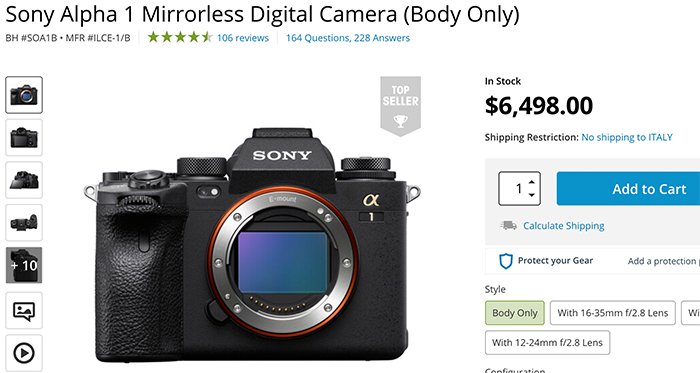How to Make a DIY Christmas Tree-Shaped Bokeh Filter!
Right in time for Christmas ;)
Right in time for Christmas ;)
Here are six lenses Gordon wants you to consider to own!
Tamron 35-150mm f/2.0-2.8 FE lens at BHphoto. Amazon. Adorama. Fotokoch DE. Foto Erhardt DE. Wex UK. Park UK.

Sony A1 at BHphoto. Adorama. Amazon. Focuscamera. FotoErhardt DE. Calumet DE. Fotokoch DE. Park UK. WexUK.
Here they explain why the Sony A1 is the camera of the year:
Samyang 24-70mm f/2.8 FE: In USA at BHphoto. In Europe at WexUK. FotoKoch DE. FotoErhardt DE.
SonyAlphaBlog tested the new Samyang/Rokinon zoom lens and concluded:
The Samyang 24-70mm F2.8 (900 euros) is globally a very good lens at a reasonable price but the competition is very tough and offer excellent options that are all better in one or several areas compared to the Samyang 24-70 F2.8
Area where the Samyang is below its peer are sharpness , build quality/ergonomics , size and weight, AF , bokeh balls shapes,
Areas where it is similar or among the best are : color rendition , background blur
Area where it is above the others : Distortion , Vignetting , ergonomics for video, focus breathing , par focal (when starting at 70mm)If you need a 24-70 my recommendation stay the Sigma 24-70mm F2.8 DG DN Art (1200 euros) better in all areas (except video) for a price tag +33%
if you want the best option at similar price and are ready to sacrifice the 24mm , then the Sigma 28-70 F2.8 DG DN Contemporary is the best option at 50% of the weight
For pure video work and for 24/33Mpix where you really need the 24mm, the Samyang is a recommended choiceRecommended for video work
If you have no money for a new lens follow this tutorial to build a telephoto pinhole lens with a pringles can :)
Sony A7IV:
In the USA at BHphoto. Amazon. Adorama. FocusCamera. BuyDig.
In Europe at Fotokoch DE. Calumet DE. Foto Erhardt DE. Park UK. Wex UK. Amazon DE. Amazon UK. Amazon IT. Amazon ES. Amazon NL.
Dpreview added the Sony A7IV studio files and writes:
The first thing that should be apparent is that the a7 IV’s 33MP sensor can capture a lot of detail and, as we saw in our real-world samples, JPEG color that’s directly comparable with the best of its peers. The higher pixel count, combined with Sony’s JPEG sharpening makes more of the fine detail than its rivals. Moiré makes an appearance, but it’s not overwhelming, which suggests there is an anti-aliasing filter, but perhaps not an especially aggressive one.
As we’d expect, the smaller pixels mean more noise if you view the images at full pixel resolution, but this difference is all but eliminated if you look at the images scaled to the same size. Push on to the higher ISO and the noise levels start to creep up, beyond the levels of its immediate rivals, though.
This additional noise can’t solely be blamed on the pixel count, though, since it’s a fraction noisier than some of its higher resolution peers. Overall this iss a good, but not ground-breaking, performance with detail capture appearing to be the a7 IV’s strong suit.